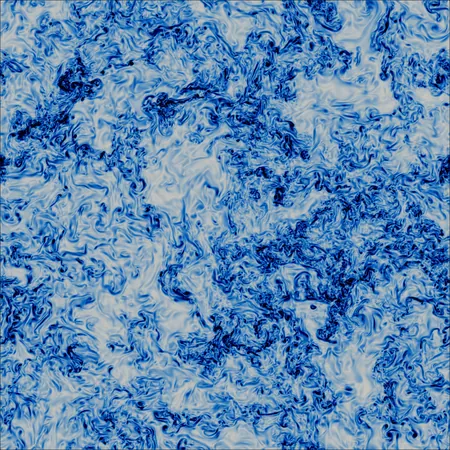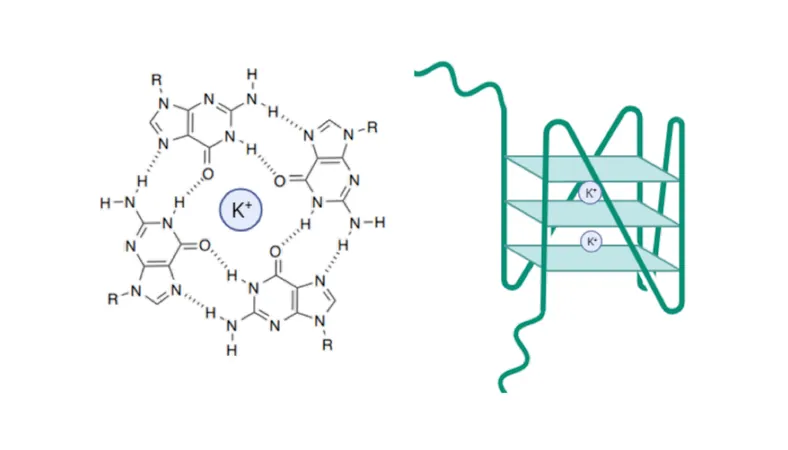
Shocking Discovery: Hidden Turbulence Unveiled in Polymer Fluids!
2025-08-22
Author: Daniel
The Enigma of Turbulence: A Century-Old Fascination
Turbulence, the erratic movement that jolts us during flights, has puzzled scientists for centuries. Now, researchers at the Okinawa Institute of Science and Technology (OIST) are delving into this phenomenon within a unique category of materials called complex fluids.
The Secret Life of Complex Fluids
Unlike straightforward liquids such as water, complex fluids behave in a fascinating gray area between liquids and solids. When long-chain molecules, known as polymers, are mixed into these fluids, they can dramatically transform their turbulence and flow characteristics. These polymer fluids are ubiquitous, found in everyday items like shampoos, dish soaps, hand sanitizers, and even your beloved ketchup!
Cracking the Code of Turbulent Behavior
Despite their prevalence, the fundamental physics governing the flow of polymer fluids has been a complex puzzle. Deciphering this is critical for innovative applications like targeted drug delivery, where the flow behaviors dictate how efficiently drugs are released into the body. However, the intricate balance of inertia and elasticity in these fluids creates a labyrinth of turbulent behaviors that's challenging to untangle.
Two Turbulent Worlds: Inertia and Elasticity
Traditionally, scientists categorized turbulence into two separate realms: inertial turbulence—the chaotic movement associated with fast-flowing fluids, like the air turbulence experienced in airplanes—and elastic turbulence, a more perplexing phenomenon. Picture the unpredictable swirling of paint when mixed in water: even gentle stirring can create chaotic flows thanks to the stretching polymers that destabilize the entire flow.
Game-Changing Findings Reveal Coexistence of Turbulences
But a groundbreaking study published in Physical Review Letters by OIST's Complex Fluids and Flows Unit challenges this notion. Using state-of-the-art computer simulations, researchers revealed that these two types of turbulence can actually coexist. Their findings indicate that while large-scale flows exhibit inertial turbulence, they shift to elastic turbulence at minuscule scales.
"The detailed simulations we conducted were unprecedented," shared Dr. Piyush Garg, the study's lead author. "We required an incredibly advanced computing system to capture such high-resolution models and reveal these hidden dynamics, which explains why this phenomenon had gone unnoticed until now. In fact, it’s the largest simulation ever undertaken for these fluid types!"
A New Paradigm: Elastic Turbulence is Everywhere!
This revelation suggests that elastic turbulence is far more common than previously thought. "Up until now, we believed that elastic turbulence only occurred in very slow flows with negligible inertia. Our research disproves that by showing it can emerge at small scales alongside inertial turbulence in polymer fluids," Dr. Garg explained.
Bridging Two Worlds in Turbulence Research
This discovery unites two branches of turbulence research that had long been considered separate. Professor Marco Rosti, head of OIST's Complex Fluids and Flows Unit, emphasized the importance of this interdisciplinary approach: "Our findings have the potential to reshape our understanding of turbulence, bridging gaps between distinct research areas. This collaboration enables us to tackle complex problems more effectively."
Implications for the Future: From Pipelines to Pharmaceutics
By uncovering the interplay between elastic and inertial turbulence, this research opens new doors for industries that depend on polymers to control fluid behaviors. From enhancing drag reduction in pipelines to optimizing chemical mixing and advancing biomedical applications, the potential ramifications of these findings are vast and revolutionary.



 Brasil (PT)
Brasil (PT)
 Canada (EN)
Canada (EN)
 Chile (ES)
Chile (ES)
 Česko (CS)
Česko (CS)
 대한민국 (KO)
대한민국 (KO)
 España (ES)
España (ES)
 France (FR)
France (FR)
 Hong Kong (EN)
Hong Kong (EN)
 Italia (IT)
Italia (IT)
 日本 (JA)
日本 (JA)
 Magyarország (HU)
Magyarország (HU)
 Norge (NO)
Norge (NO)
 Polska (PL)
Polska (PL)
 Schweiz (DE)
Schweiz (DE)
 Singapore (EN)
Singapore (EN)
 Sverige (SV)
Sverige (SV)
 Suomi (FI)
Suomi (FI)
 Türkiye (TR)
Türkiye (TR)
 الإمارات العربية المتحدة (AR)
الإمارات العربية المتحدة (AR)